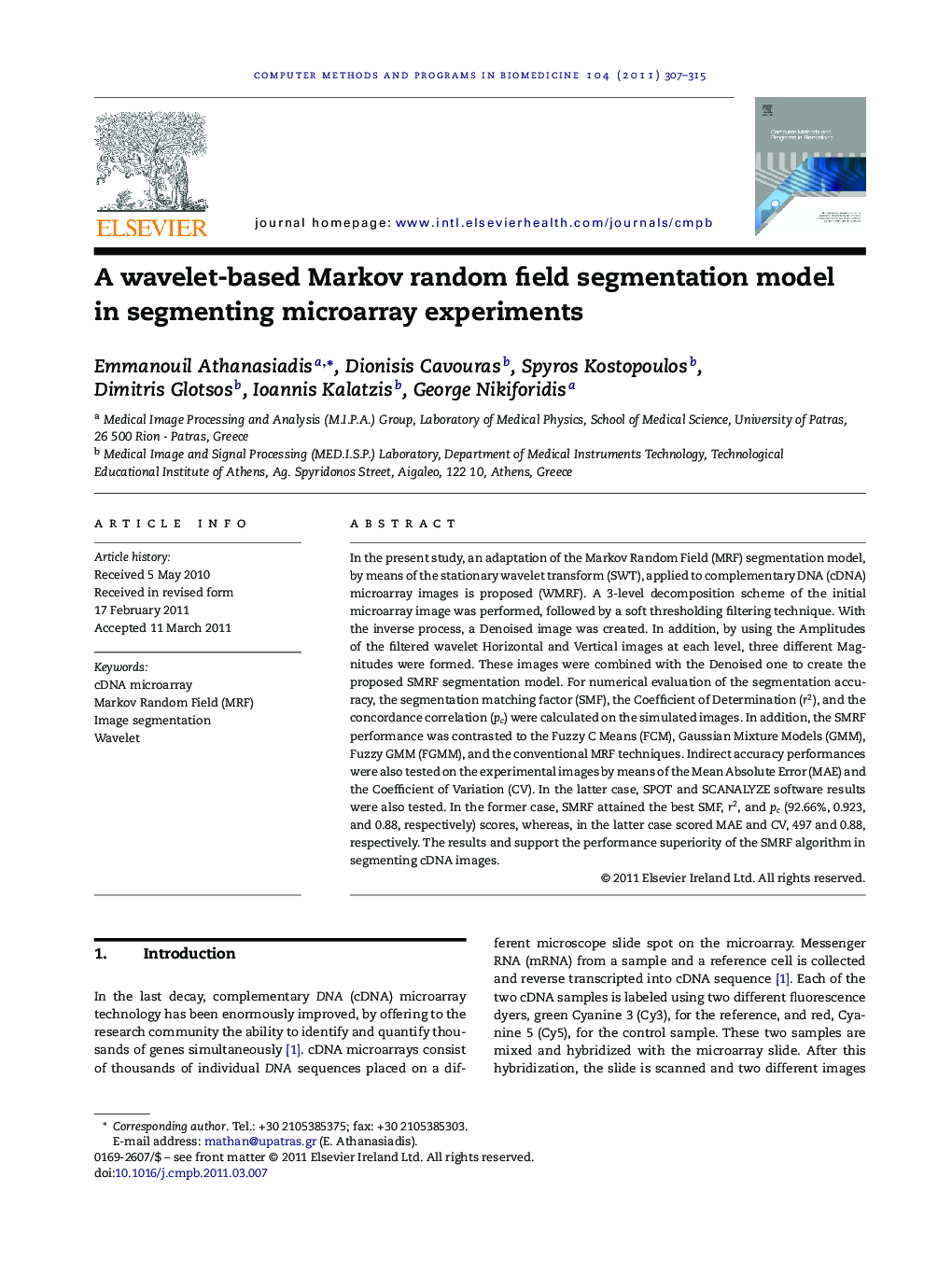| Article ID | Journal | Published Year | Pages | File Type |
|---|---|---|---|---|
| 466826 | Computer Methods and Programs in Biomedicine | 2011 | 9 Pages |
In the present study, an adaptation of the Markov Random Field (MRF) segmentation model, by means of the stationary wavelet transform (SWT), applied to complementary DNA (cDNA) microarray images is proposed (WMRF). A 3-level decomposition scheme of the initial microarray image was performed, followed by a soft thresholding filtering technique. With the inverse process, a Denoised image was created. In addition, by using the Amplitudes of the filtered wavelet Horizontal and Vertical images at each level, three different Magnitudes were formed. These images were combined with the Denoised one to create the proposed SMRF segmentation model. For numerical evaluation of the segmentation accuracy, the segmentation matching factor (SMF), the Coefficient of Determination (r2), and the concordance correlation (pc) were calculated on the simulated images. In addition, the SMRF performance was contrasted to the Fuzzy C Means (FCM), Gaussian Mixture Models (GMM), Fuzzy GMM (FGMM), and the conventional MRF techniques. Indirect accuracy performances were also tested on the experimental images by means of the Mean Absolute Error (MAE) and the Coefficient of Variation (CV). In the latter case, SPOT and SCANALYZE software results were also tested. In the former case, SMRF attained the best SMF, r2, and pc (92.66%, 0.923, and 0.88, respectively) scores, whereas, in the latter case scored MAE and CV, 497 and 0.88, respectively. The results and support the performance superiority of the SMRF algorithm in segmenting cDNA images.
